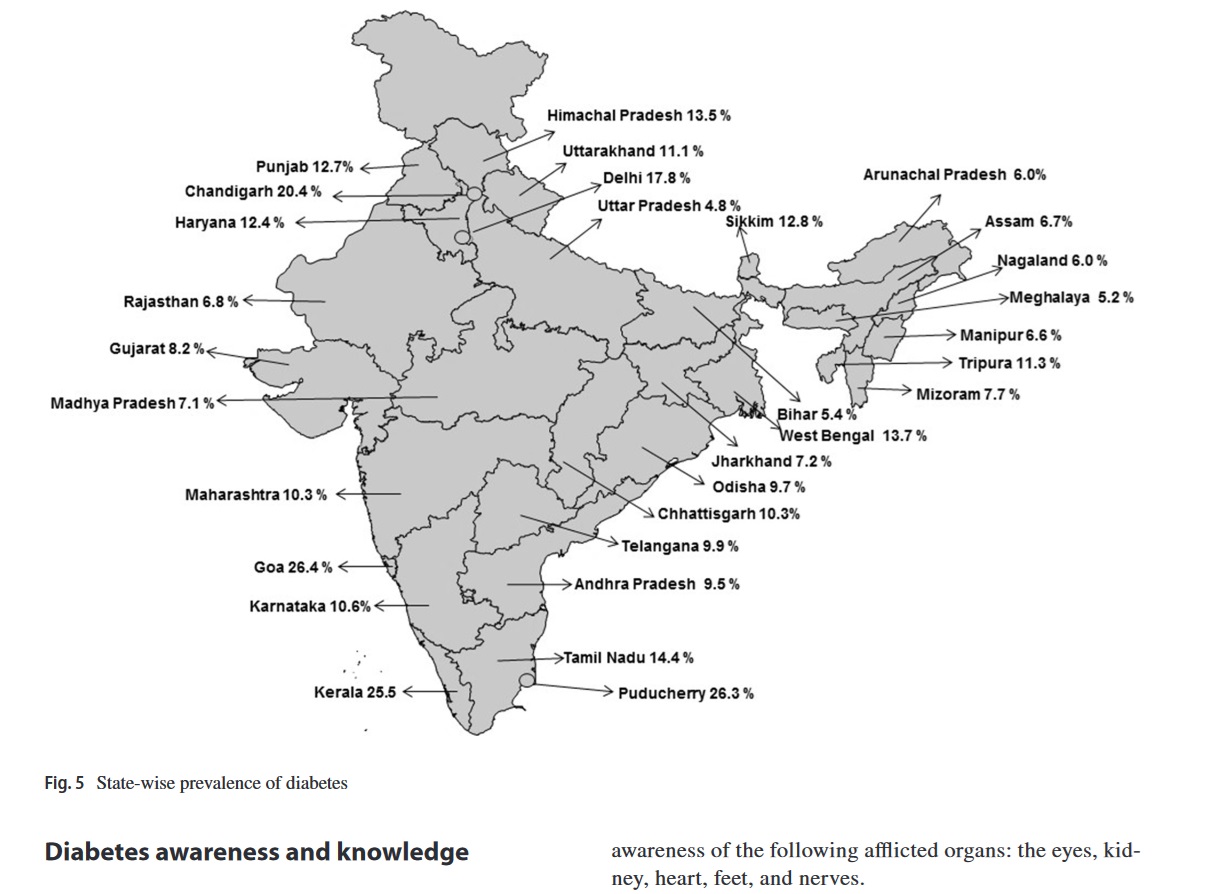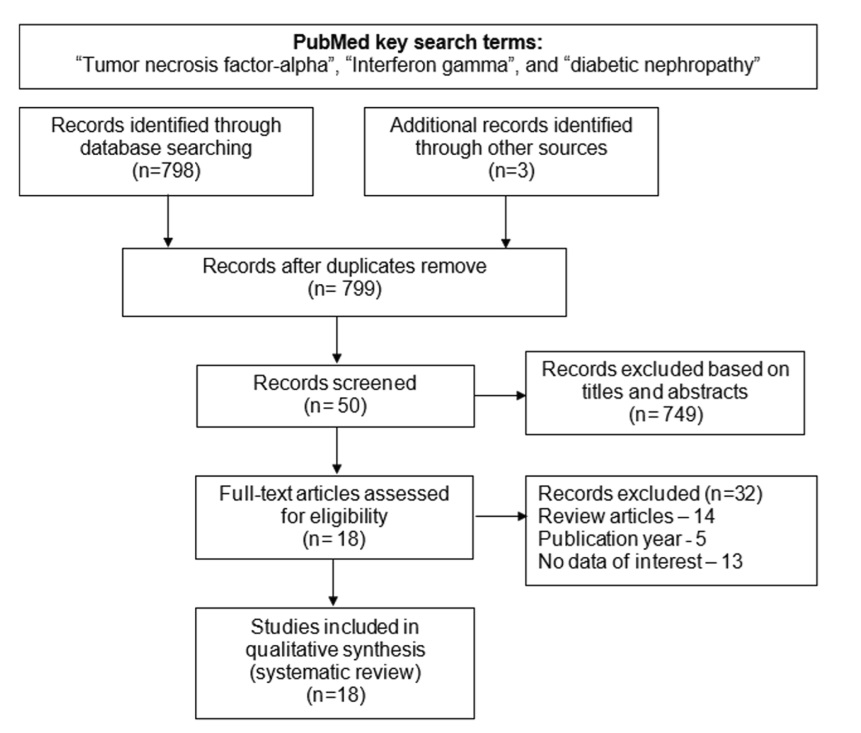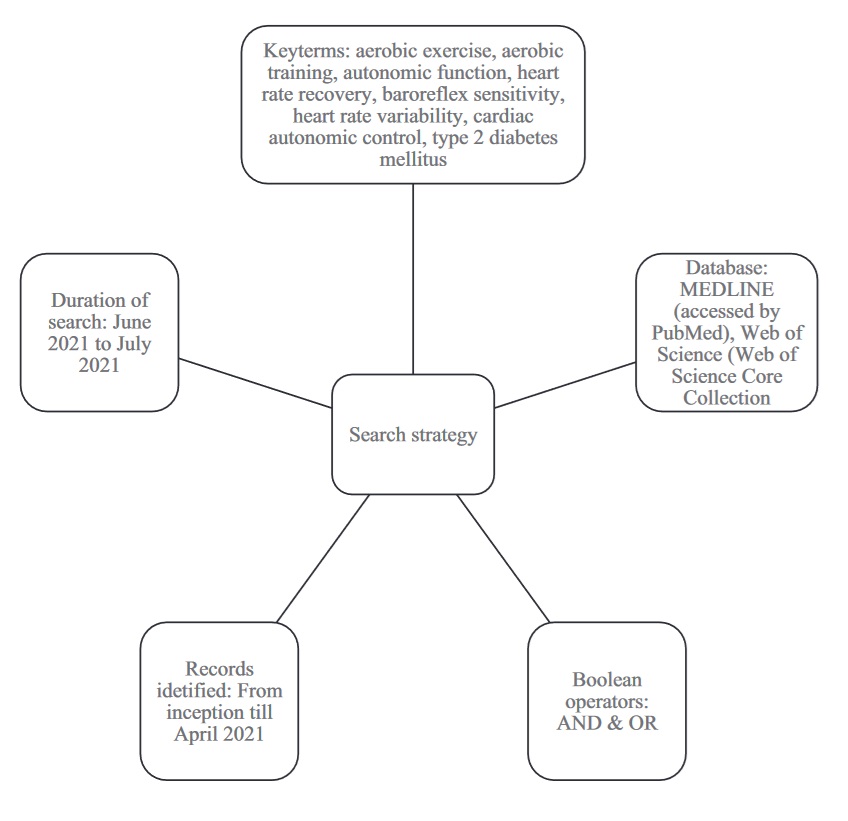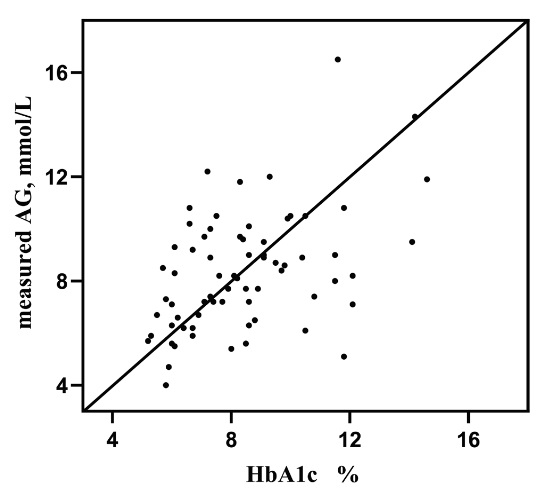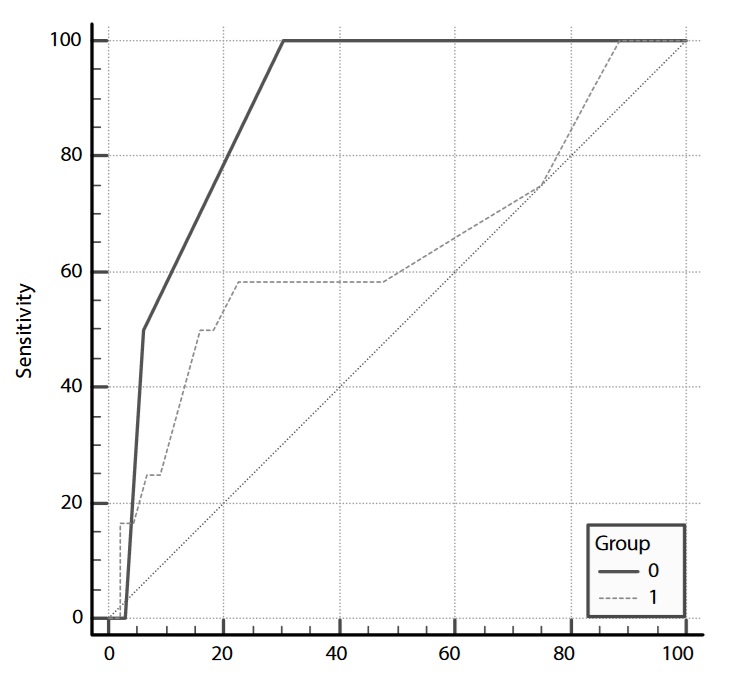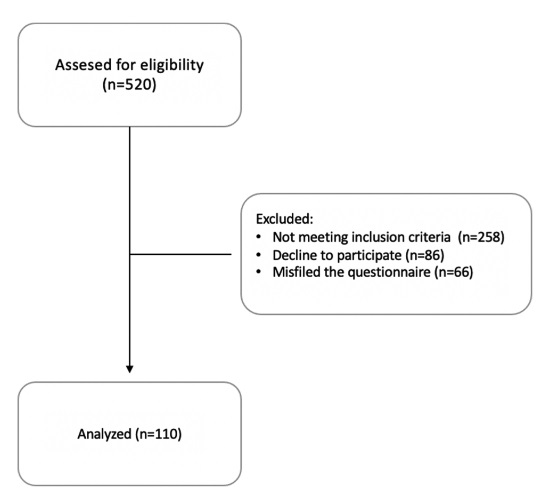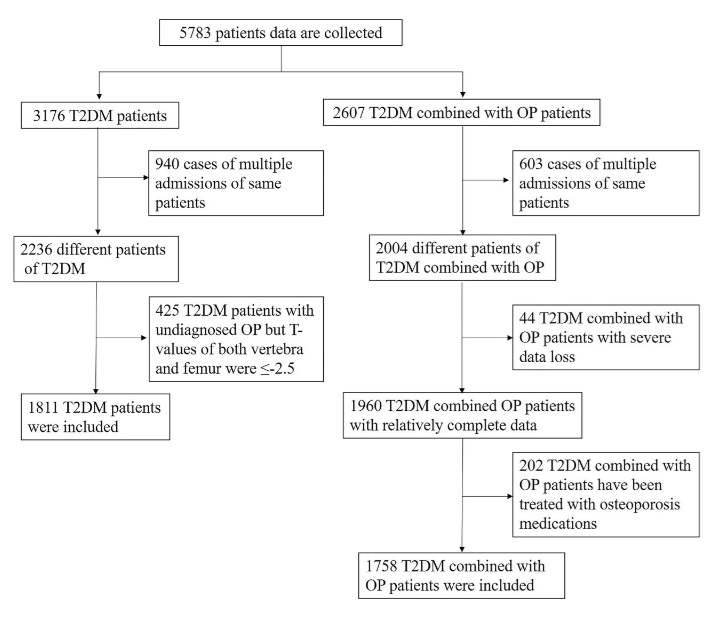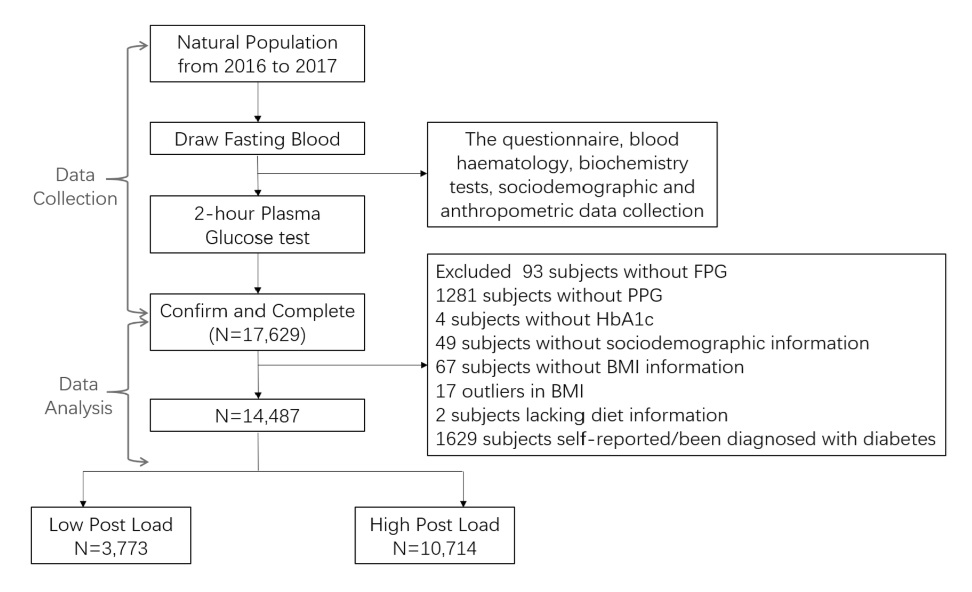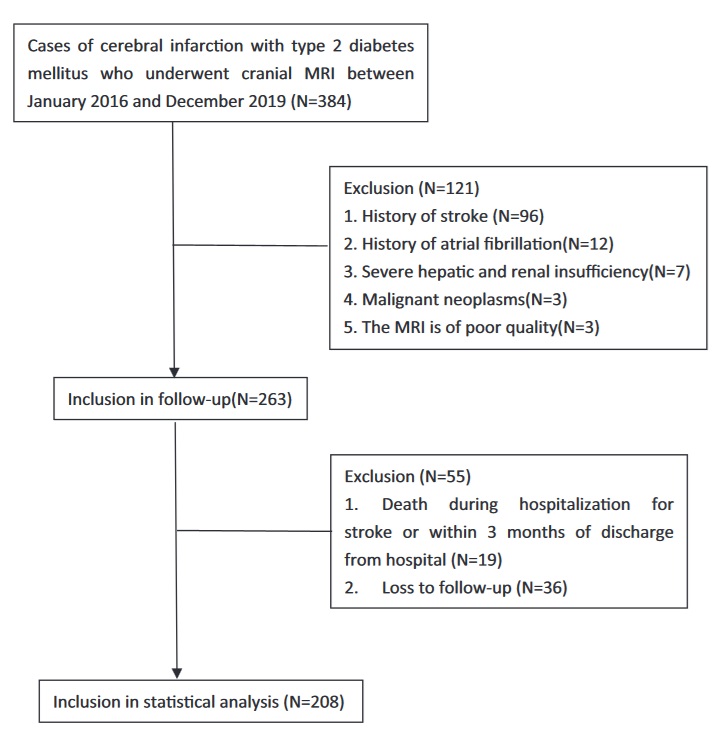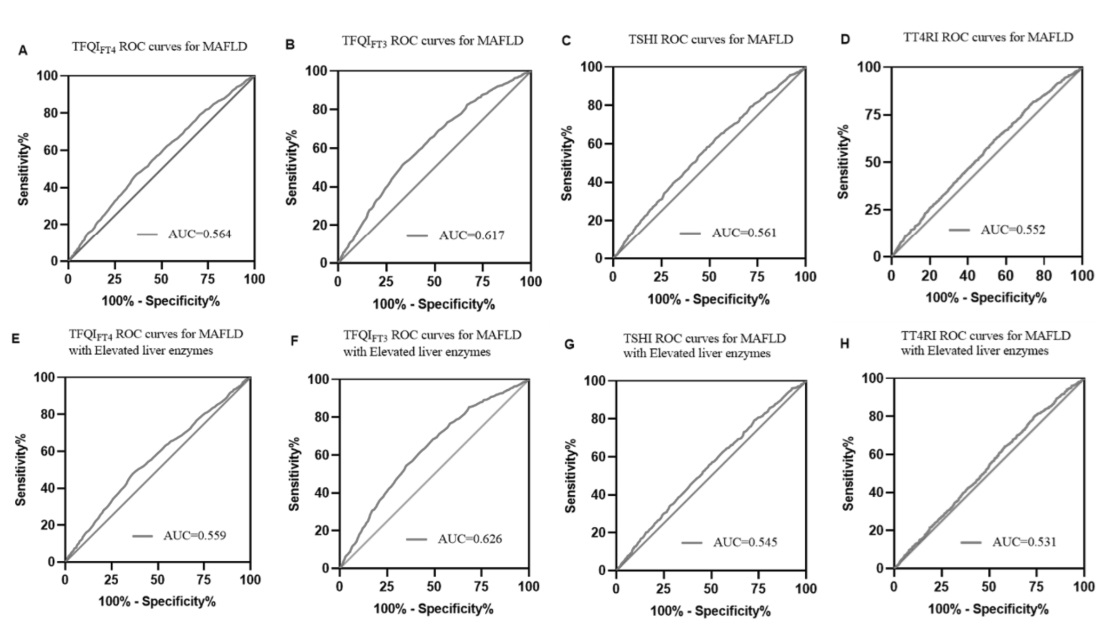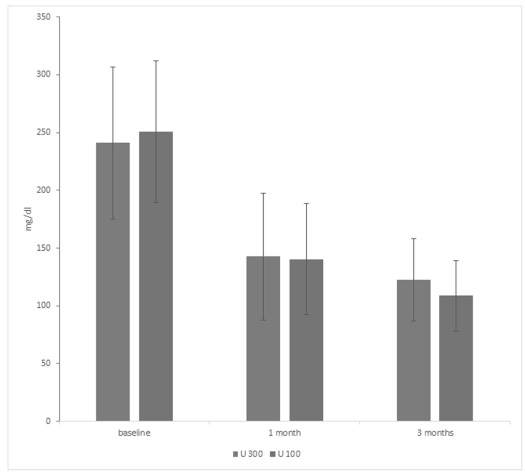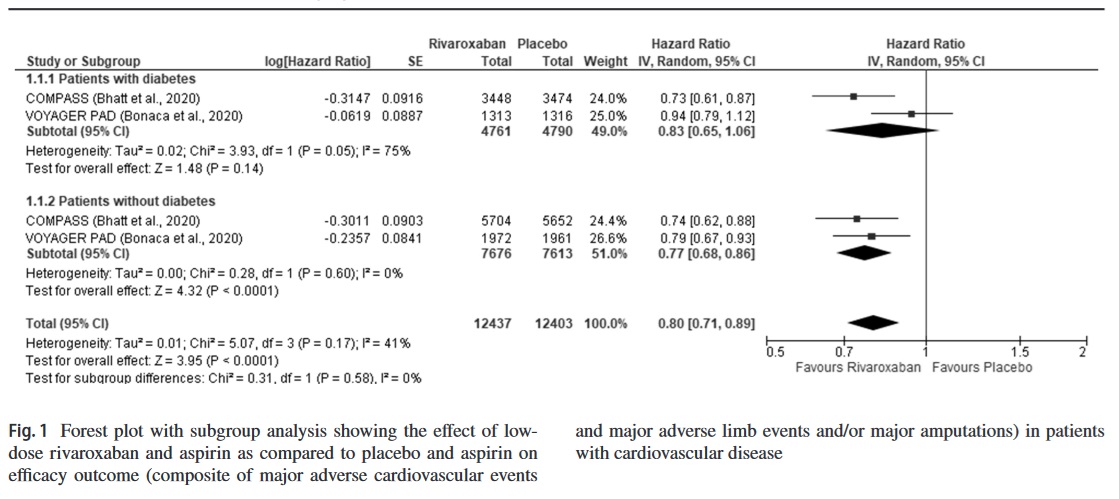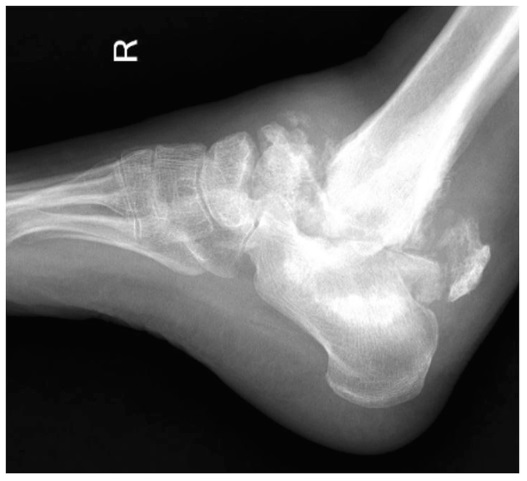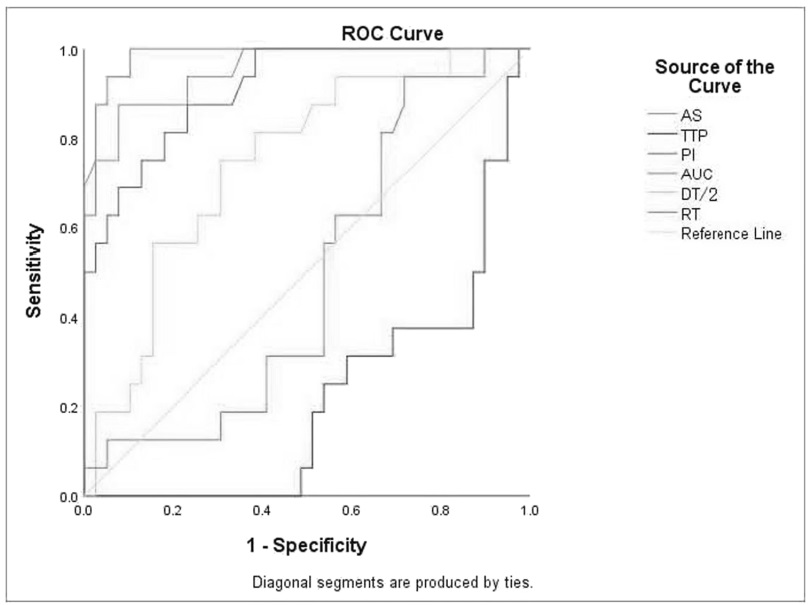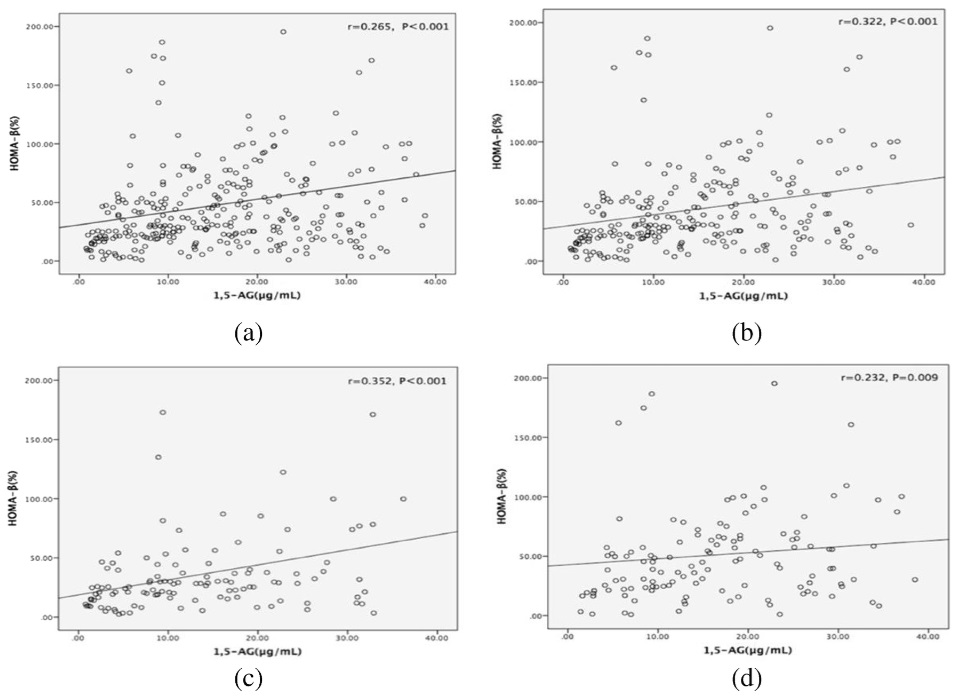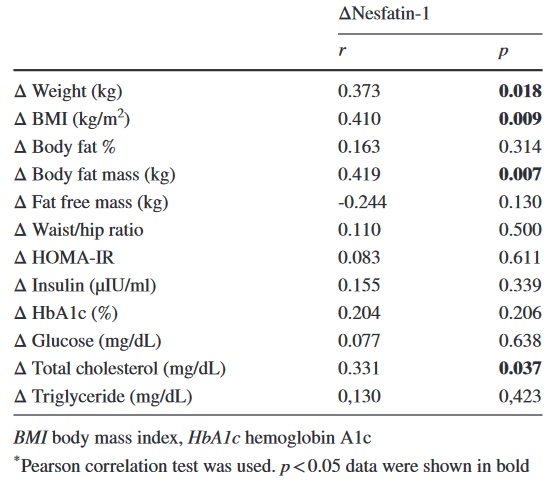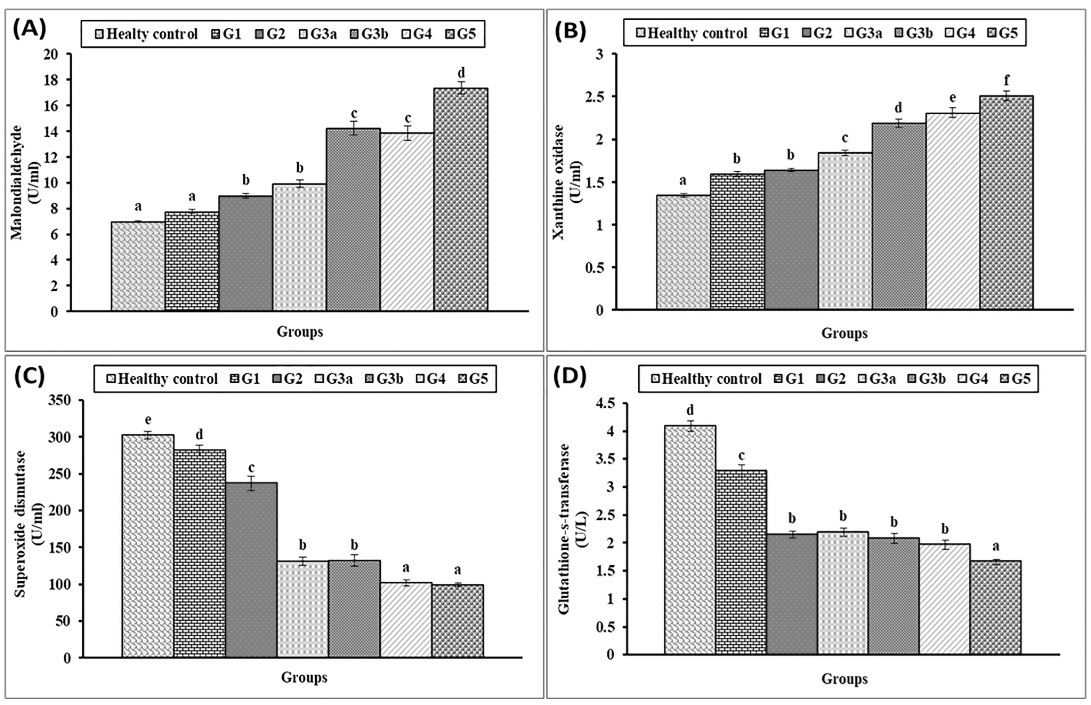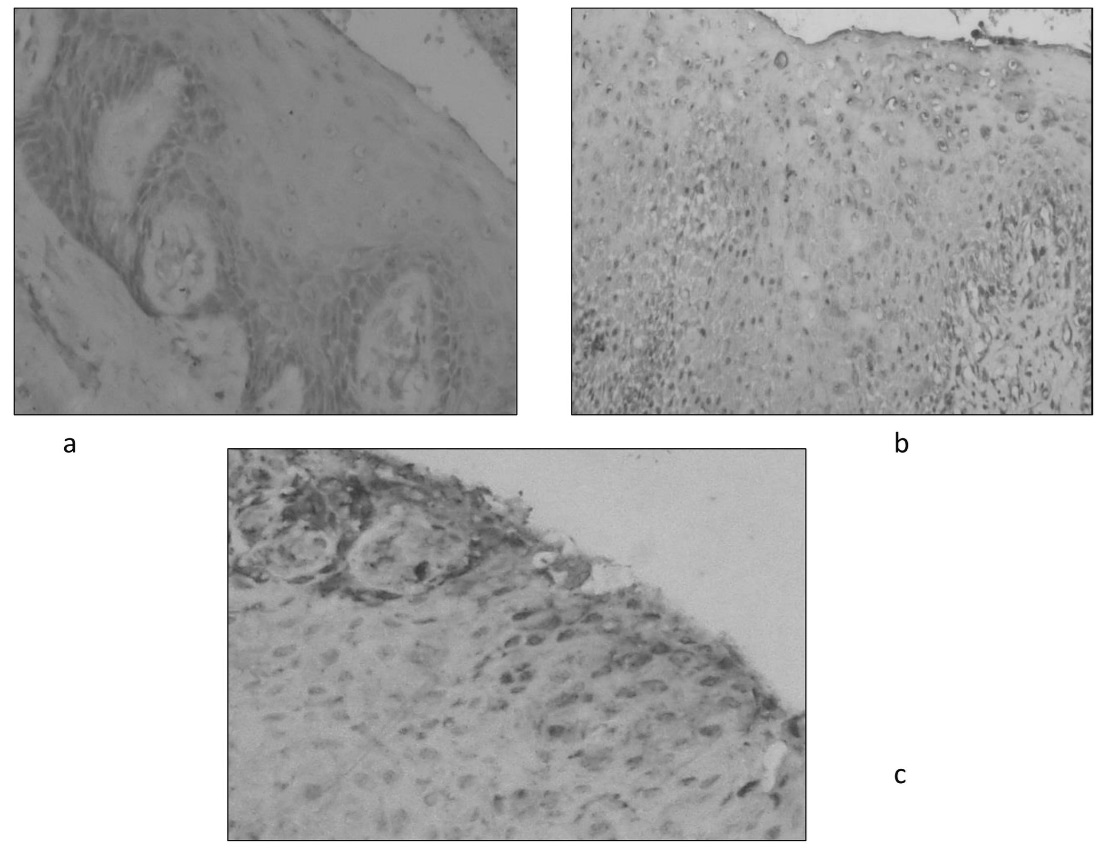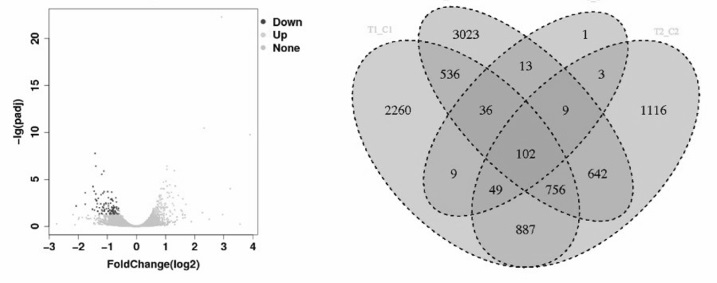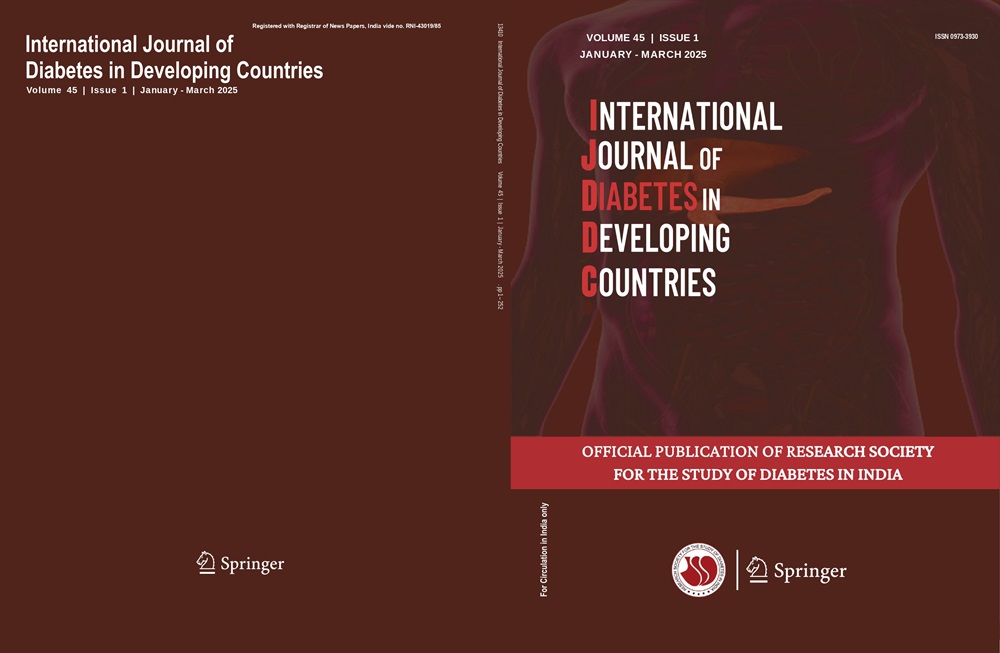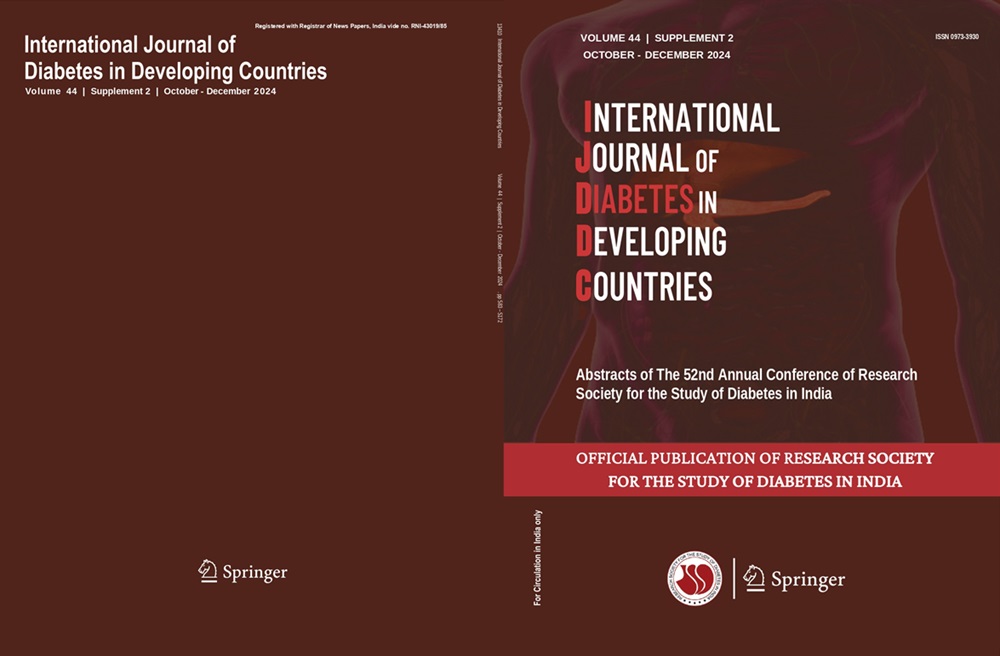October - December, 2024 • Vol. 44 • # 4
Editorial: Advancements and insights into diabetic nephropathy
Diabetic nephropathy (DN) remains a critical concern in the management of diabetes, significantly impacting patient health outcomes and healthcare systems.
Burden of non-communicable diseases in India : Findings from the ICMR-INDIAB study
The prevalence of type 2 diabetes is rising quickly in low- and middle-income nations like India. In order to develop preventive strategies and comprehend the effects of diabetes as a contributing factor to other non-communicable diseases (NCDs), it is essential to have robust population-level epidemiological data. It is challenging to generalize findings from regional studies given the diversity of India’s population, cultural practices, and dietary patterns.
Serum and urinary levels of tumor necrosis factor-alpha and interferon-gamma in diabetic nephropathy patients: a systematic review
In this systematic review, we determined the association of selected inflammatory cytokines in blood and urine with diabetic nephropathy (DN).
Effect of aerobic training on baroreflex sensitivity, heart rate recovery, and heart rate variability in type 2 diabetes: a systematic review
Dysfunction of cardiac autonomic control (CAC) in people with type 2 diabetes mellitus (T2DM) is a predictor of cardiovascular disease mortality. The purpose of this study was to systematically review the literature on the effects of aerobic exercise training on CAC in people with T2DM.
Assessment of equations estimating average glucose among patients with diabetic kidney disease before dialysis
Estimation of average glucose (AG) from hemoglobin A1c (HbA1c) helps guide diabetes management, and thus several AG-HbA1c equations have been constructed.
Differences in nutrition, handgrip strength, and quality of life in patients with and without diabetes on maintenance hemodialysis in Xi'an of China
Malnutrition, reduced muscle function, and reduced quality of life are common problems among patients undergoing maintenance hemodialysis (MHD). This study aimed to evaluate nutritional risk, handgrip strength, and quality of life between patients with and without diabetes undergoing MHD to improve the nutrition, handgrip strength, and quality of life of patients with diabetic.
Poor accuracy of HbA1c for the diagnosis of prediabetes in overweight and obese Bangladeshi adults
This retrospective cross sectional study was conducted in 108 overweight/obese and 40 normal weight Bangladeshi adults. Those satisfying the exclusion and inclusion criteria were included.
Parental monitoring status of the children with type 1 diabetes mellitus (DM) and their quality of life
This study was carried out to determine the relationship between parental monitoring status of the children with type 1 DM and their quality of life.
Factors affecting the prolongation of glycemic time in range among children with type 1 diabetes using continuous glucose monitoring systems : A case control study
Time in range is a reliable measure of the risk of diabetes complications. High percentage of patients with diabetes fail to achieve the recommended time in range (TIR) target of 70–180 mg/dl (3.9–10 mmol/l) >70%.
Correction to: Factors affecting the prolongation of glycemic time in range among children with type 1 diabetes using continuous glucose monitoring systems: A case control study
In the Results section of the Abstract, the statement “TIR >70%” should be “TIR ≤70%”.
Iranian patients with diabetes and COVID-19-associated mucormycosis: Characteristics, manifestations, and mortality risk factors
This study evaluated the mortality risk factors in Iranian patients with diabetes mellitus (DM) and COVID-19 associated mucormycosis (CAM).
Clinical risk factors analysis and prevention of osteoporosis as a complication of diabetes
Osteoporosis is a common complication of type 2 diabetes. This study aimed to provide a basis for the clinical prevention and treatment of osteoporosis as a complication of type 2 diabetes.
Fasting plasma glucose and 2-h postprandial plasma glucose characteristics in a large multi-ethnic Chinese population
During an oral glucose tolerance test (OGTT), typically fasting plasma glucose is lower than 2-h postprandial plasma glucose. However, postprandial plasma glucose (PPG) levels lower than fasting plasma glucose (FPG) levels may also occur.
Influence of cerebral small vessel disease on functional outcome and recurrence of cerebral infarction in patients with type 2 diabetes
To estimate the effect of the total cerebral small vessel disease score in the functional outcome and recurrence of cerebral infarction in patients with type 2 diabetes.
The effects of sodium-glucose cotransporters type 2 inhibitors on glycemic and extraglycemic laboratory parameters
An ideal glucose-lowering drug is expected to not only improve glycemic control, but also have positive effects on weight, blood pressure, dyslipidemia, and also cardiovascular and renal outcomes.
Relationship between impaired sensitivity to thyroid hormones and MAFLD with elevated liver enzymes in the euthyroid population
There is a delicate interplay between thyroid hormones and thyrotropin (TSH) and metabolic homeostasis. However, the role of thyroid hormone sensitivity in metabolic health, particularly in relation to metabolic dysfunction-associated fatty liver disease (MAFLD) and associated complications such as elevated liver enzymes and free fatty acid (FFAs) has not been elucidated in euthyroid populations.
Effectiveness and safety of insulin glargine U-300 as compared to insulin glargine U-100 in oral antidiabetic (OAD) failure cases-record-based observational study
Type 2 diabetes is a significant public health concern that affects over 537 million adults worldwide. Oral antidiabetic (OAD) failure can be a complex management issue in patients with type 2 diabetes. Insulin glargine U-300 is a newer type of basal insulin with more consistent pharmacological effects than traditional insulin glargine.
Modeling of postprandial glycemic response by consecutive reaction kinetics model for precise glycemic control
The dynamics of postprandial glycemic response are crucial for human health, while there is currently a lack of efficient models that can capture its fine features.
Does benefits of rivaroxaban as add-on to aspirin apply to diabetes-related cardiovascular disease? Insights from the COMPASS and VOYAGER PAD trials
The Cardiovascular Outcomes for People Using Anticoagulation Strategies (COMPASS) trial and the Vascular Outcomes Study of ASA (acetylsalicylic acid) Along with Rivaroxaban in Endovascular or Surgical Limb Revascularization for PAD (peripheral artery disease) (VOYAGER PAD) trial have demonstrated that compared to aspirin alone, low-dose rivaroxaban and aspirin significantly improve major adverse limb events (MALE) and major adverse cardiovascular events (MACE) in patients with coronary artery disease (CAD) or peripheral artery disease (PAD)
Skeletal fragility in type 1 diabetes mellitus : A rare case of avascular necrosis of talus
A divergent fracture pattern is seen in patients living with type 1 diabetes (T1D). These patients are at risk for fractures at unusual distal sites over and above the fractures occurring at major osteoporotic sites. Avascular necrosis (AVN) involving the talus has not been reported previously in T1D.
Clinical reflections of diabetic nephropathy related pathological lesions
The Renal Pathology Society developed a universal pathological classification of diabetic nephropathy in 2010. Some research has been conducted to validate this classification’s ability to predict the outcome. However, the clinical implications of these pathological abnormalities are still being investigated.
Cytokine gene polymorphism with type 2 diabetes and diabetic nephropathy in population from West India
Genetic polymorphisms of the angiogenesis, inflammatory cascade, or apoptosis genes can influence chronic complications in diabetic patients. Cytokine gene polymorphisms are considered vital in diabetes and diabetic nephropathy (DN) susceptibility.
The value of contrast-enhanced ultrasound in the diagnosis of microcirculatory perfusion abnormalities in diabetic foot
Diabetic foot is one of the most serious complications of type 2 diabetes mellitus (T2DM), and its incidence is increasing in China. Early detection of abnormal microcirculation in the foot is very important for the prevention and treatment of diabetic foot.
The correlation between serum 1, 5-anhydroglucitol and β-cell function in Chinese adults with different glucose metabolism statuses
Serum 1, 5-AG is a glycaemic marker reflecting control and fluctuations of short-term glucose. To reveal the relationship between 1, 5-AG with β-cell function, we investigated a certain number of Chinese adults with different glucose metabolisms.
Association between nesfatin-1 hormone levels, anthropometric measurements, and glucose regulation shortly after sleeve gastrectomy: A cross-sectional study
This cross-sectional study was planned to evaluate the relationship between serum nesfatin-1 levels, glucose regulation and anthropometric measurements of individuals who had undergone sleeve gastrectomy.
Association of microRNA-192, pentraxin-3, and transforming growth factor-beta1 with estimated glomerular filtration rate in adults with diabetic nephropathy
Nephropathy is among the most pervasive complications of diabetes; it frequently results in end-stage renal disease and even death. However, current biomarkers for diabetic nephropathy (DN) have limited diagnostic utility.
Association of the rs7903146 variant (IVS3C> T) of TCF7L2 with the prevalence of the metabolic syndrome and its components in population from Ahvaz cohort study: a case-control study in Iran
The metabolic syndrome consists of a combination of metabolic abnormalities and genetic predisposition that both contribute significantly to its development. Numerous studies have established a strong association between single nucleotide polymorphisms (SNPs) of the rs7903146 variant in the TCF7L2 gene and the metabolic syndrome (MetS) as well as type 2 diabetes.
Expression of NLRP3 and superoxide dismutase-2 (SOD2) in the gingival tissues of periodontitis patients with and without type 2 diabetes mellitus: a case-control study
To evaluate the interaction between the NLRP3 inflammasome and superoxide dismutase-2 (SOD2) to provide an insight into the complex host response in periodontitis patients with type 2 diabetes mellitus (T2DM), who have an inherent upregulation of inflammatory cytokines and reactive oxygen species (ROS).
High expression of the glutathione S-transferase A2 and neuropilin-2 genes affects pancreatic islet β-cell function
Type 2 diabetes mellitus (T2DM) seriously affects human life and health. The aim of this study is to investigate the molecular mechanisms underlying the pathogenesis of T2DM through functional studies of pancreatic β-cell line in vitro.

